Air Pressure Curriculum
Section 3—Lesson 7: Reasoning About Air Pressure Differentials Using Relational Causality
Background Information
Students' Default Interpretations are Typically Linear
What makes a liquid go up a straw when you suck on it? Students often answer this question using a simple linear causal model where one thing directly makes another thing happen. So for instance, "sucking makes the liquid go up the straw" or "a vacuum is formed and it pulls the liquid up into your mouth."
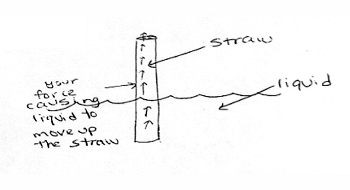
Revealing Relational Causality Behind Drinking From a Straw
The activity in this lesson reveals to students that a relational causality is in play. When you drink from a straw, you lower the air pressure inside the straw and so the relatively higher atmospheric pressure surrounding the straw pushes the liquid up. The result is due to an air pressure differential.
| Relational Models | |
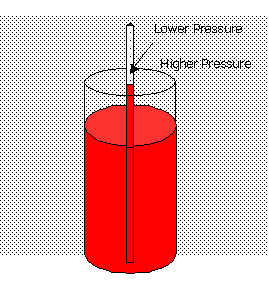 |
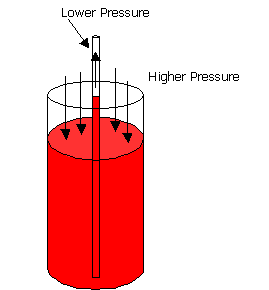 |
| This model uses dots to depict higher and lower pressure. | This model uses arrows to depict higher and lower pressure. |
So how does the activity work and in what way does it reveal the relational causality? The activity uses three flasks with straws. Flask A is just like the straw above. However, Flasks B and C are modified. Flask B's straw has a hole just below where it sticks out of the flask. This makes it impossible to lower the air pressure inside the straw because as air is removed, more air rushes in to take its place. Therefore, you cannot achieve a differential in air pressure. Flask C has a stopper on the top. Therefore, initially it is possible to remove a certain amount of liquid from the straw. However, this has the effect of decreasing the air pressure in the flask. Liquid is removed, but because it is a closed system, no air can enter to take its place, so the remaining air spreads out to take up the available space, an example of Boyle's Law. Thus, air pressure is lowered in the flask (and in the straw) and no differential can be achieved.
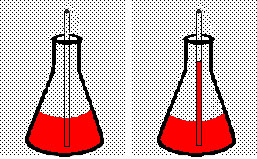 |
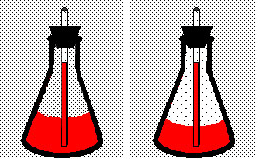 |
| Flask B Before and During | Flask C Before and During |
As students begin to analyze why these modified flasks won't work, the relationship between higher atmospheric pressure and lower pressure inside the straw is revealed. In all of these conversations, an emphasis is put on the relational aspects, so the terms "higher" and "lower" are used rather than "high" and "low."
Note to Teacher: Students work in groups of three for this activity. However, if you have enough supplies, you might consider having each student try each of the three flasks so that they have direct experience with the effects of each modification.


